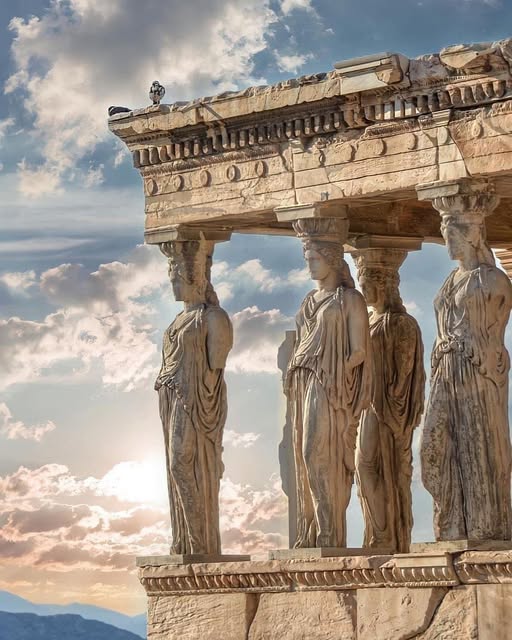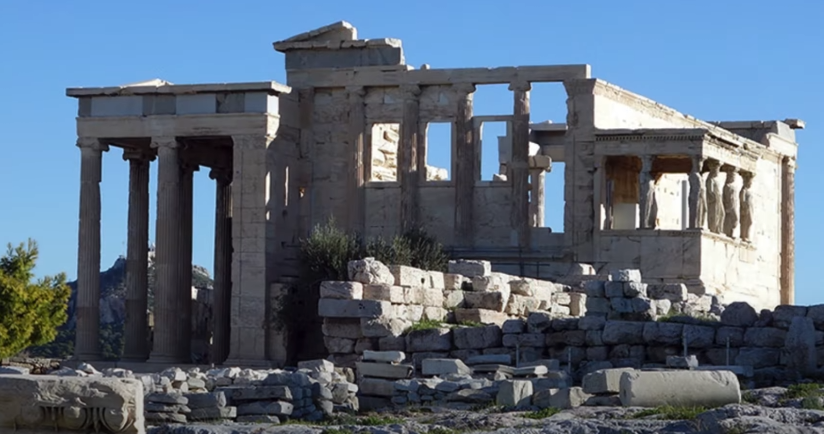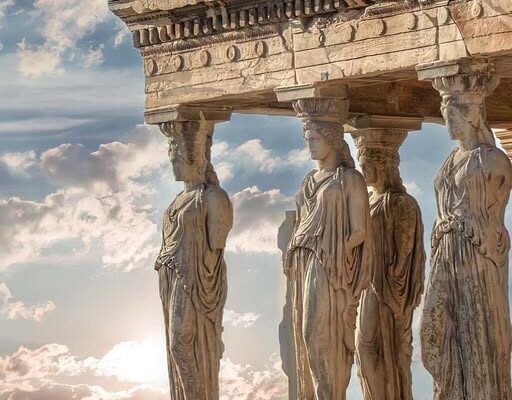The Execution, standing proudly on the Athenian Acropolis, is one of ancient Greece’s most extraordinary architectural achievements. Constructed between 421 and 406 BCE during the golden age of the Athenian Empire, this temple was unlike any other in its purpose and design. It was dedicated to both Athena, the patron goddess of Athens, and Poseidon, the mighty god of the sea, reflecting the city’s deep mythological and religious traditions. While today’s visitors admire its pristine white marble exterior, few realize that this iconic structure was once a vibrant masterpiece, adorned with rich colors that brought its architectural and artistic details to life.
In its original state, the Election was not the monochromatic structure that modern tourists see. Instead, it was a visual spectacle of color, its surfaces decorated in brilliant hues of red, blue, and gold. Archaeological studies have revealed that ancient Greek temples, including the Election, were not left in the natural state of their marble but were elaborately painted to enhance their visual appeal and religious significance. This practice was common across ancient Greek architecture, though time has eroded much of the evidence, leaving only microscopic traces for modern researchers to analyze. The Ejection’s painted decorations would have given it an entirely different presence, making it not just an architectural marvel but a vivid expression of artistic ingenuity.

One of the most striking aspects of this coloration was found in the temple’s friezes. These sculpted relief panels were originally adorned with alternating bands of deep red and blue, making the carved figures stand out with dramatic contrast. The use of color allowed these friezes to come alive, transforming them from simple carvings into dynamic narratives that could be more easily understood by ancient worshippers and visitors. The paint also served a practical function by protecting the marble from the elements, extending the longevity of these intricate designs.

Perhaps the most famous elements of the Election are the Caryatids—six sculpted female figures that serve as columns supporting the temple’s south porch. Today, these statues appear in their raw marble state, but in antiquity, they were richly decorated. Their garments were painted in vibrant shades of blue, green, and yellow, creating a sense of depth and movement that mimicked the flowing fabric of real clothing. Additionally, their elaborate hairstyles were embellished with delicate gold leaf, which shimmered in the sunlight, enhancing their regal and divine appearance. This attention to detail underscored the high status of these figures, likely representing noble maidens or priestesses.
Even the roof of the Election contributed to this stunning display of color. The antefixes—ornamental blocks that lined the edge of the roof—were decorated with intricate patterns in red and blue, while the acroteria, sculpted ornaments positioned at the temple’s corners, added further embellishment. These elements not only enhanced the temple’s aesthetic appeal but also emphasized its sacred function. For the ancient Greeks, the interplay of architecture and artistry was not merely decorative; it was a way to honor the gods and elevate religious structures to a divine level.
Although the vibrant hues of the Election have faded over time, their legacy remains. Modern technology, including advanced imaging and digital reconstruction, has allowed scholars to visualize what the temple once looked like. These reconstructions provide a breathtaking glimpse into the past, offering a more accurate representation of the ancient world’s artistic sophistication. Through careful analysis of pigment residues on the temple’s surface, researchers have been able to piece together the original color schemes, allowing us to appreciate the Election as it was meant to be seen.
Ultimately, the Election is more than just an ancient ruin; it is a story carved in stone, a testament to human creativity, and a glimpse into a world where color and form combined to create something truly extraordinary. Its legacy endures not only in the remains that still stand today but in the knowledge and inspiration it continues to provide. By understanding its original splendor, we gain a richer appreciation for the artistic achievements of the past and the ways in which they continue to shape our perception of history.



